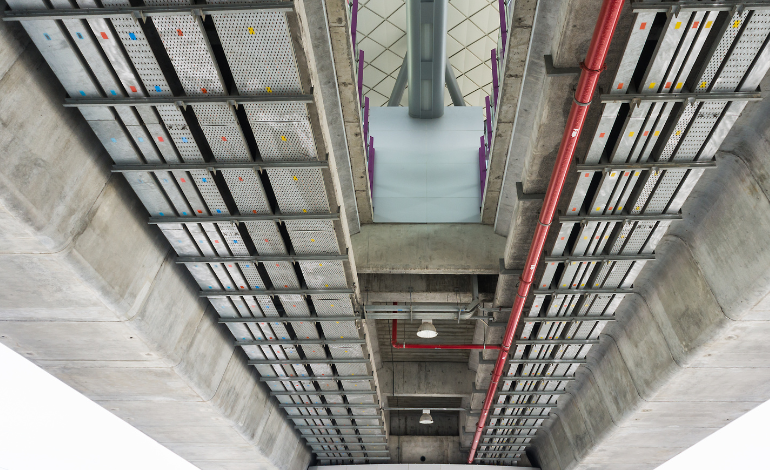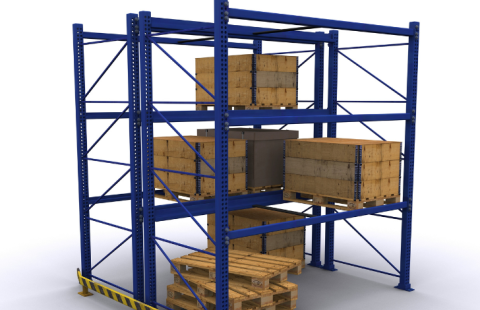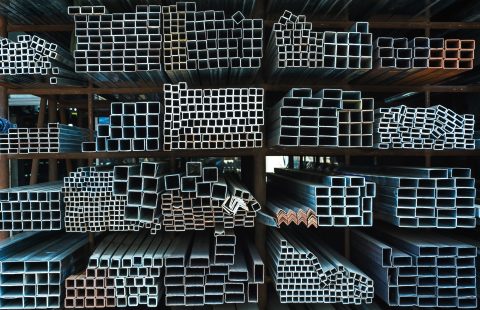Blog
- Home
- Cable Tray
- Cable Tray: The Electrical Support System

Cable Tray: The Electrical Support System
In the electrical wiring of buildings, a cable tray system is used to support insulated electrical cables used for power distribution, control, and communication. Cable trays are used as an alternative to open wiring or electrical conduit systems, and are commonly used for cable management in commercial and industrial construction. They are especially useful in situations where changes to a wiring system are anticipated, since new cables can be installed by laying them in the tray, instead of pulling them through a pipe. Cable trays are capable of supporting all types of wiring: such as
High Voltage Power Lines, Power Distribution Cables, Control cables, Telecommunication cables, Fiber Optical Cables.
A cable tray system supports and protects both power and signal cables and facilitates upgrading, expanding, reconfiguring, or relocating networks. Most of the cable tray systems are open, allowing efficient heat dissipation and easy access for replacement and repairs. Although typically suspended from ceilings or affixed to walls, some cable tray systems are suitable for underfloor use. When it comes to selection of cable tray, an engineer or designer will usually specify the type of cable tray that has the features to suit the project. It depends on the situation and the environment. The selection of cable tray depends upon the number of cables, size, spacing, and weight of cable in the tray.
The following are popular cable tray types:
- Ladder-type
- Perforated type
- Solid bottom type
- Wire mesh
- Channel type
Ladder Cable Tray:
Ladder Cable tray has two side rails connected by rungs. This type of cable tray is effective because the ladder rungs give you easy accessibility to the cables, from the top or bottom. The rungs of the ladder cable trays provide convenient anchors for tying down the cables in the non-horizontal cable tray runs or where the positions of the cables must be maintained in the horizontal cable tray runs.
Perforated Cable Tray:
Perforated cable tray Consists of a ventilated bottom with side rails. It provides more support to cables than the ladder-type,
Solid-bottom Cable Tray:
Solid-bottom Cable trays for fiber-optic cable installations where drooping of cables may affect system performance, solid-bottom (non-ventilated) cable trays are preferred.
However, the main reason for selecting solid-bottom trays is a concern for electromagnetic/ radio-frequency interference protection.
Wire Mesh Cable Tray:
Wire mesh cable tray, also called basket cable tray, is a kind of cable tray made of stainless-steel wires by welding wires together, forming a basket-like mesh
Cable Trays are mainly used for low voltage, telecommunication, and fiber optic cables supported on short spans.
Channel Cable Tray:
Channel cable tray nothing more than a metal tray that can be used for very small cable installations.
Advantages:
- Less expensive: One of the big advantages that using a cable tray has that it costs a lot less than other methods of protecting wiring on the production floor.
- Maintenance: Cable are instantly visible for maintenance checks, changing of cables is easy because cables can enter or exit the tray at any point of the system.
- Safety: Regular housekeeping is important for safety, as cable trays are often installed in hard-to-reach places.
Disadvantages:
The solid bottom cable tray system has a disadvantage. In that moisture can build up in the cable trays.
Conclusion
In marketable and industrial construction, cable trays are constantly used for cable operation as an alternative to open wiring or electrical conduit systems. Since new cables can be installed by placing them in the tray rather than pulling them through a pipe, they’re especially helpful in instances when changes to a wiring system are planned.
Cable Tray is used to support large number of cable or tubing between two points. The design of tray is recommended to be perforated to prevent liquid or droplet trapped. Tray shall be protected with tray cover for installation where possibility of fallen objects such as liquid spill, debris, etc, on the tray may exist.
Beniko Industries manufactures high quality cable trays and accessories as mass production in own industrial plant with continuous production line of progress. Contact us today for support system for your cables.


